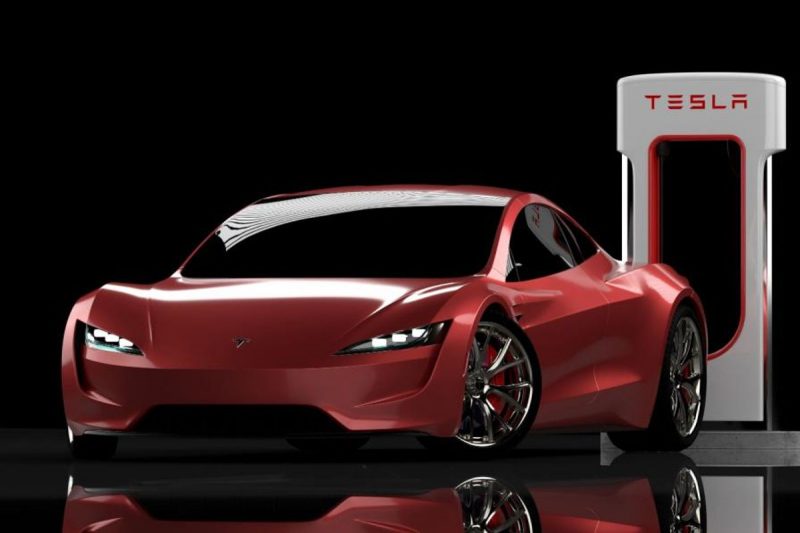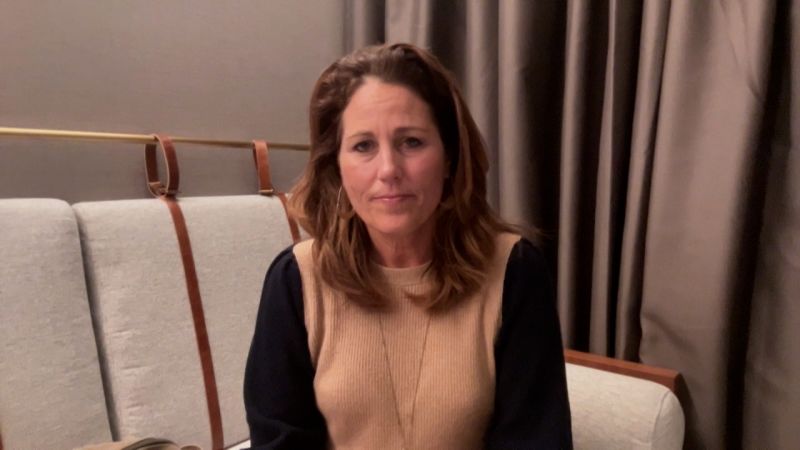Skyharbour Resources Ltd. (TSX-V: SYH ) (OTCQ X : SYHBF ) (Frankfurt: SC1P ) (the ‘Company’) is pleased to announce that it has acquired by staking seven new prospective uranium exploration claims in Northern Saskatchewan, increasing Skyharbour’s total land package that it has ownership interest in to 518,302 ha (1,215,941 acres) across 24 projects. These 100% owned claims add an additional 13,945 ha to Skyharbour’s existing holdings in and around the Athabasca Basin, which is host to the highest-grade uranium deposits in the world and is consistently ranked as a top mining jurisdiction by the Fraser Institute. As the Company remains focused on its co-flagship Russell Lake and Moore projects, these new properties will become a part of Skyharbour’s prospect generator business as the Company will seek strategic partners to advance these assets.
Skyharbour’s New Uranium Project Portfolio Map:
https://skyharbourltd.com/_resources/maps/SKY_SaskProject_Locator_V2B_20230727.jpg
List of New Claims :
CBX Project – additional five new contiguous claims totalling 6,804 ha linking the Company’s former CBX and Snow projects Karin Project – one additional claim totalling 5,882 ha 914W Project – new project totalling 1,260 ha
Jordan Trimble, President and CEO of Skyharbour Resources, states ‘We continue to add to our dominant uranium project portfolio in the Athabasca Basin with this recent staking while advancing our core projects through ongoing drilling and exploration. These new mineral claims bolster existing properties and provide additional ground to option or joint-venture out to new partner companies as a part of our prospect generator business.’
Summary of Recently Staked Properties:
CBX Project:
The CBX property has been recently expanded through staking to include five additional claims adjoining the previously staked CBX and Snow properties, which have been combined to include a total of seven claims covering 8,777 ha. The new claims lie approximately 6.5 km to 25 km north to northeast of the Eagle Point uranium mine and cover the northern shore of Wollaston Lake including parts of Cunning Bay. Outcrop exposure on the property is poor, but historical mapping and drilling shows that the newly expanded CBX project is underlain by a mixture of Wollaston Supergroup metasedimentary gneisses, Hudsonian intrusives, and Archean felsic gneisses of the Western Wollaston Domain. Similar lithologies host uranium mineralization at the Rabbit Lake operation, including the Eagle Point deposit, and other uranium deposits in the Athabasca Basin and surrounding regions.
CBX Project Map:
https://skyharbourltd.com/_resources/maps/Sky_CBXShoe20230727_.jpg
Like the previously staked CBX claims, these new claims have seen a variety of historical exploration conducted mainly between 1968-1981, including airborne and ground EM, magnetics, and radiometrics surveys, marine seismic surveys, prospecting, geological mapping, and geochemical, with some additional work in 1993. There was also a limited amount of historic drilling in 1979-1980, including drill hole CBA-1 on the Cunning West Grid in the southeastern end of the property, and two diamond drill holes, WN-14 and WN-15, drilled in 1980 in the north-central part of the property on the Ross Channel Grid. All three drillholes were shallow (
914 W Project :
The 914W project consists of one claim covering 1,260 ha approximately 48 km southwest of Cameco’s Key Lake Operation. Highway 914 runs through the western edge of the project, providing excellent access for exploration. Historical geological mapping of the property and surrounding area has shown that the project is predominantly underlain by prospective Wollaston Supergroup pelitic and psammitic to arkosic gneisses of the Western Wollaston Domain, which host significant unconformity-related uranium mineralization further to the north in the Athabasca Basin as well as pegmatite-hosted uranium mineralization elsewhere in the Wollaston Domain.
914W, 914, 914N, and Elevator Projects Map:
https://skyharbourltd.com/_resources/maps/Sky_914_Elevator_20230727.jpg
Despite the project’s proximity to Highway 914 and prospective geology, the project has seen limited exploration work. The earliest work on the 914W property included airborne EM and magnetic surveys and ground geological reconnaissance in 1968-1970, lake water and sediment sampling in 1976, ground VLF-EM, magnetic, and radiometric surveys, geological mapping, trenching, as well as sampling on the project and surrounding areas. Immediately to the north of the 914W property, prospecting led to the discovery of the Scurry Rainbow Zone E (SMDI1961) and the Don Lake Trenches (SMDI 1983), where up to 1,288 ppm U was encountered in drill hole ML-1 (SMDI1961) in a pyroxene-rich unit, and surface prospecting revealed up to 0.64% U 3 O 8 in a trench at Don Lake Zone E (SMDI 1983). More recently, the project has seen airborne geophysical coverage by helicopter-borne VTEM (southern half) in 2005 and Tempest TDEM (northern half) in 2007, with prospecting, geological mapping, rock/sediment sampling and lake sediment sampling occurring on the project and surrounding areas in 2005-2007. However, much of the most recent exploration work was completed on areas outside of the extents of the 914W project and the project remains underexplored and prospective for unconformity-related and pegmatite-hosted uranium and REE’s.
Karin Project:
One additional claim was added to Skyharbour’s Karin Project during this latest round of staking, extending the project to cover six claims totalling 24,265 ha, approximately 21 km to 33 km east of Highway 914 and 20 km southeast of Cameco’s Key Lake operation. This new claim, totalling 5,882 ha, is adjacent to Skyharbour’s Foster project. Like the remainder of the Karin project, it is underlain by Wollaston Group metasedimentary gneisses, mostly psammitic to meta-arkosic in composition but with localized prospective pelitic to psammopelitic gneisses in fold noses, and it is prospective for both unconformity-related and pegmatite-hosted uranium mineralization.
Karin Project Map:
https://skyharbourltd.com/_resources/maps/Sky_Karin_20230727.jpg
The Karin project, including the new claim, had seen some exploration in the late 1960’s to early 1980’s, including airborne EM, magnetics and radiometrics, radon surveys, prospecting, geological mapping, lake water and sediment sampling, as well as a limited amount of diamond drilling. Two drill holes were attempted on the new claim added to the Karin project, however both attempts were lost during casing. Five drill holes that were successfully drilled on the remainder of the Karin project intersected Wollaston Supergroup meta-arkose and semipelitic to pelitic gneisses, amphibolite and pegmatite to granodiorite, along with localized hematite, chlorite, epidote, and/or goethite alteration. One of these drillholes, 78-1, intersected a weakly radioactive pegmatite which returned 0.025% U3O8 over 0.45 m at a depth of 72.85 m (AF 74H03-0036). The drilling on the Karin project was targeting some of the stronger EM conductors and radon anomalies on the property, however several other historical EM anomalies did not receive follow-up work. Given that this work took place prior to the development of modern geophysics and uranium exploration models, it is likely that additional prospective targets remain untested on the Karin project. The only recent exploration on the project consisted of limited prospecting in 2008, which led to the discovery of a pegmatite outcrop that returned 181 ppm U, 205 ppm Nb, and 39 ppm Ta (SMDI 5179). The Karin project has otherwise been unexplored since the 1980’s and remains prospective for both intrusive-type and unconformity-related uranium deposits and intrusive-related REE’s.
Marketing Agreement with Outside the Box Capital :
Skyharbour also announced that it has entered into a six month marketing and consulting contract with Toronto-based marketing firm Outside The Box Capital Inc. (‘OTBC’). OTBC specializes in various social media platforms and digital marketing strategies, and will be able to facilitate greater awareness and widespread dissemination of the Company’s news. In connection with the agreement set to commence in August, 2023, and run for six months, the Company will pay Outside The Box Capital Inc. a total cash fee of CAD $100,000 plus applicable taxes. Outside The Box Capital Inc. owns no securities of the Company as of the date hereof and is arm’s length to the Company. The engagement of OTBC remains subject to TSX Venture Exchange approval.
Qualified Person:
The technical information in this news release has been prepared in accordance with the Canadian regulatory requirements set out in National Instrument 43-101 and reviewed and approved by David Billard, P.Geo., a Consulting Geologist for Skyharbour as well as a Qualified Person.
*SMDI refers to the Saskatchewan Mineral Deposits Index and ‘AF’ refers to Saskatchewan Mineral Assessment File.
About Skyharbour Resources Ltd.:
Skyharbour holds an extensive portfolio of uranium exploration projects in Canada’s Athabasca Basin and is well positioned to benefit from improving uranium market fundamentals with twenty-four projects, ten of which are drill-ready, covering over 518,000 hectares (over 1.2 million acres) of land. Skyharbour has acquired from Denison Mines, a large strategic shareholder of the Company, a 100% interest in the Moore Uranium Project which is located 15 kilometres east of Denison’s Wheeler River project and 39 kilometres south of Cameco’s McArthur River uranium mine. Moore is an advanced-stage uranium exploration property with high-grade uranium mineralization at the Maverick Zone that returned drill results of up to 6.0% U 3 O 8 over 5.9 metres including 20.8% U 3 O 8 over 1.5 metres at a vertical depth of 265 metres. Adjacent to the Moore Uranium Project is Skyharbour’s recently optioned Russell Lake Uranium Project from Rio Tinto, which hosts historical high-grade uranium drill intercepts over a large property area with robust exploration upside potential. The Company is actively advancing these projects through exploration and drill programs.
Skyharbour has joint-ventures with industry-leader Orano Canada Inc. and Azincourt Energy at the Preston and East Preston Projects, respectively, whereby Orano and Azincourt earned majority interests in the projects through exploration expenditures, cash payments and share issuances. Skyharbour also has several active earn-in option partners including: ASX-listed Valor Resources at the Hook Lake Uranium Project; CSE-listed Basin Uranium Corp. at the Mann Lake Uranium Project; CSE-listed Medaro Mining Corp. at the Yurchison Project; Yellow Rocks Energy, a private Australian entity, at the Wallee and Usam Island projects; North Shore Energy Metals at the South Falcon Project; and TSX-V listed Tisdale Clean Energy at the South Falcon East Project which is host to the Fraser Lakes Zone B Uranium and Thorium Deposit.
Collectively, Skyharbour has now signed earn-in option agreements with partners that total to over $37 million in partner-funded exploration expenditures, over $28 million worth of shares being issued and over $19 million in cash payments coming into Skyharbour, assuming that these partner companies complete their entire earn-ins at the respective projects.
Skyharbour’s goal is to maximize shareholder value through new mineral discoveries, committed long-term partnerships, and the advancement of exploration projects in geopolitically favourable jurisdictions.
Skyharbour’s Uranium Project Map in the Athabasca Basin:
https://skyharbourltd.com/_resources/maps/SKY_SaskProject_Locator_V2A_20230727.jpg
To find out more about Skyharbour Resources Ltd. (TSX-V: SYH) visit the Company’s website at www.skyharbourltd.com .
Skyharbour Resources Ltd.
‘Jordan Trimble’
Jordan Trimble
President and CEO
For further information contact myself or:
Nicholas Coltura
Corporate Development and Communications
Skyharbour Resources Ltd.
Telephone: 604-558-5847
Toll Free: 800-567-8181
Facsimile: 604-687-3119
Email: info@skyharbourltd.com
NEITHER THE TSX VENTURE EXCHANGE NOR ITS REGULATION SERVICES PROVIDER ACCEPTS RESPONSIBILITY FOR THE ADEQUACY OR ACCURACY OF THE CONTENT OF THIS NEWS RELEASE.
The securities offered have not been, and will not be, registered under the United States Securities Act of 1933, as amended (the ‘U.S. Securities Act’) or any U.S. state securities laws, and may not be offered or sold in the United States or to, or for the account or benefit of, United States persons absent registration or an applicable exemption from the registration requirements of the U.S. Securities Act and applicable U.S. state securities laws. This press release does not constitute an offer to sell or the solicitation of an offer to buy securities in the United States, nor in any other jurisdiction.
This release includes certain statements that may be deemed to be ‘forward-looking statements’. All statements in this release, other than statements of historical facts, that address events or developments that management of the Company expects, are forward-looking statements, including the Private Placement. Although management believes the expectations expressed in such forward-looking statements are based on reasonable assumptions, such statements are not guarantees of future performance, and actual results or developments may differ materially from those in the forward-looking statements. The Company undertakes no obligation to update these forward-looking statements if management’s beliefs, estimates or opinions, or other factors, should change. Factors that could cause actual results to differ materially from those in forward-looking statements, include market prices, exploration and development successes, regulatory approvals, continued availability of capital and financing, and general economic, market or business conditions. Please see the public filings of the Company at www.sedar.com for further information.










